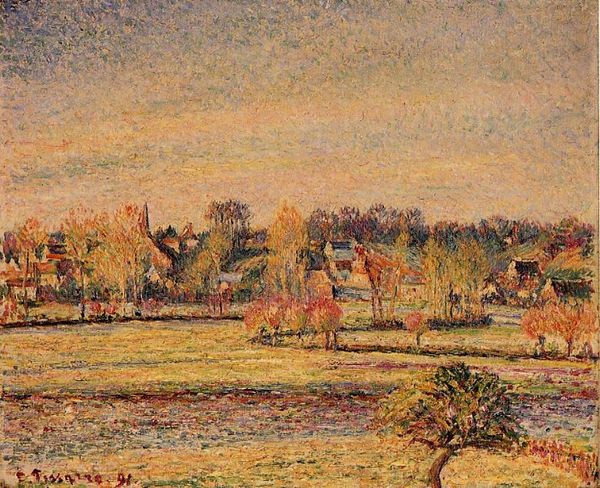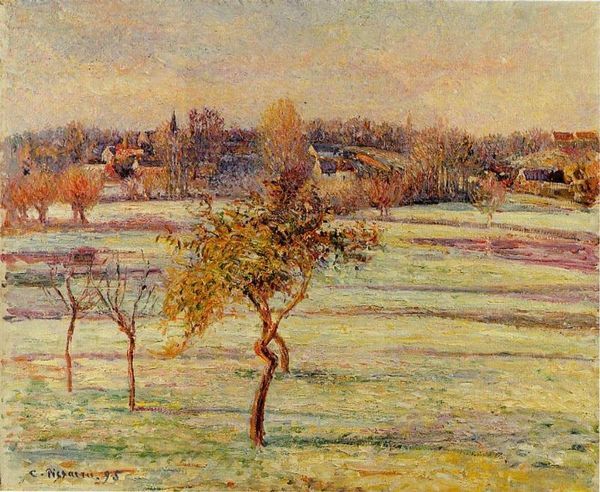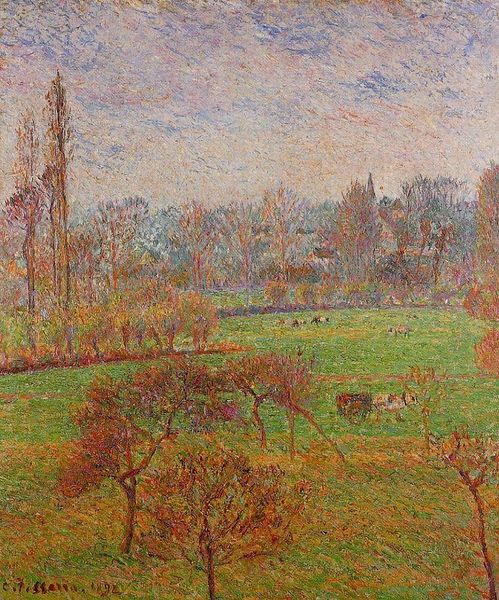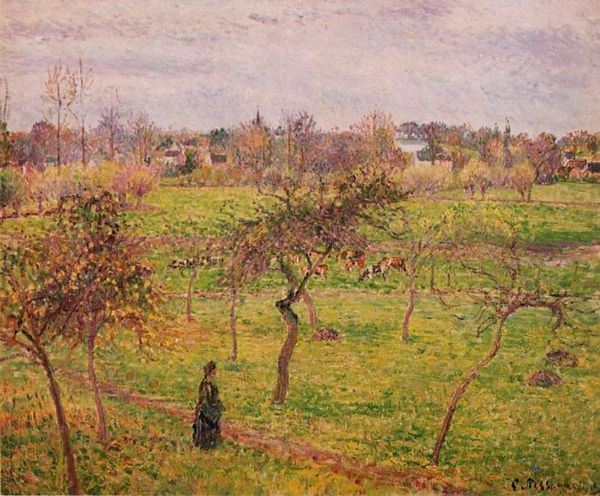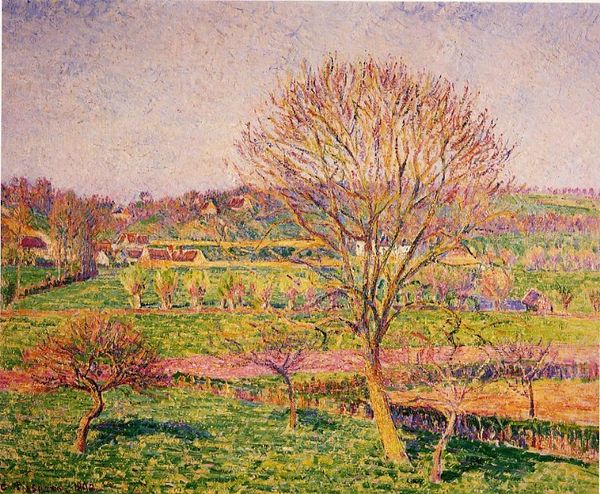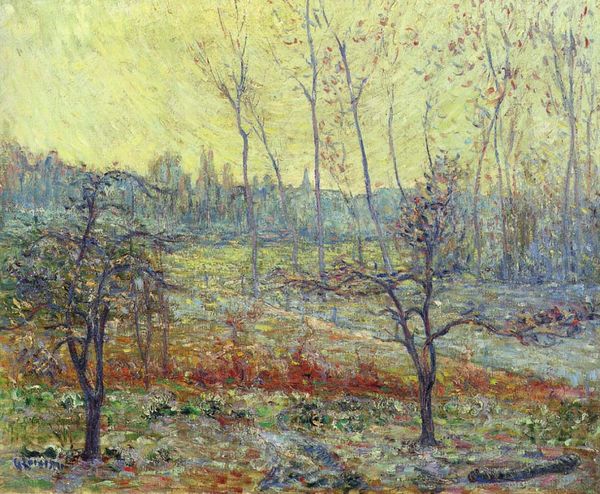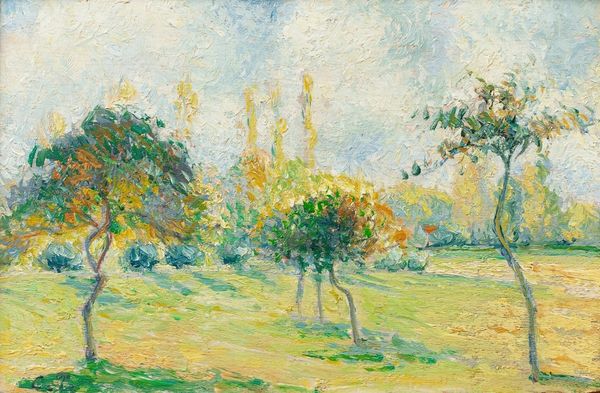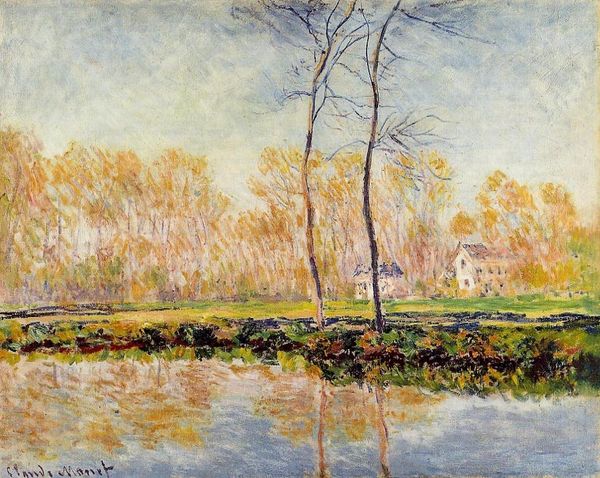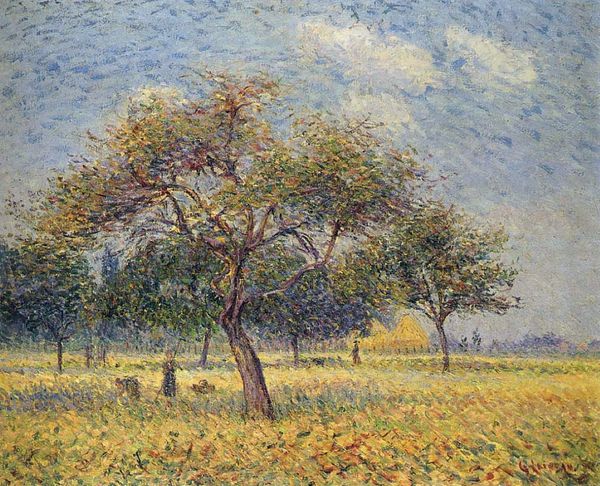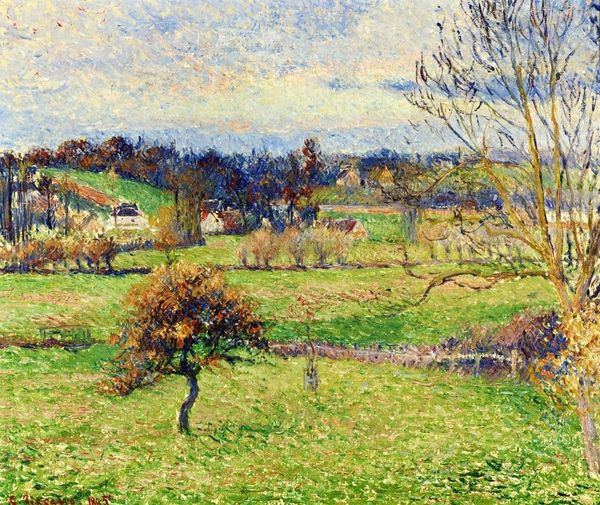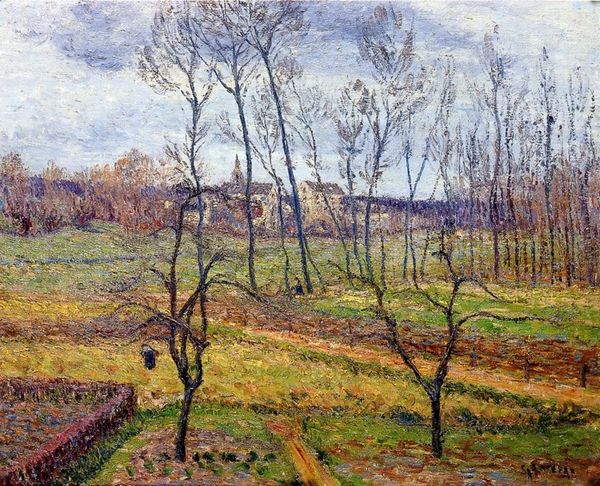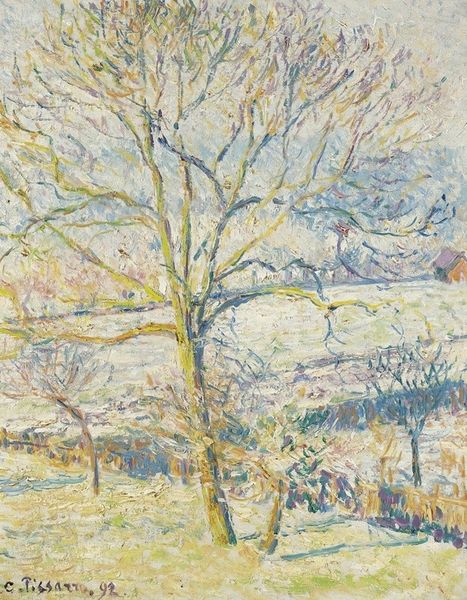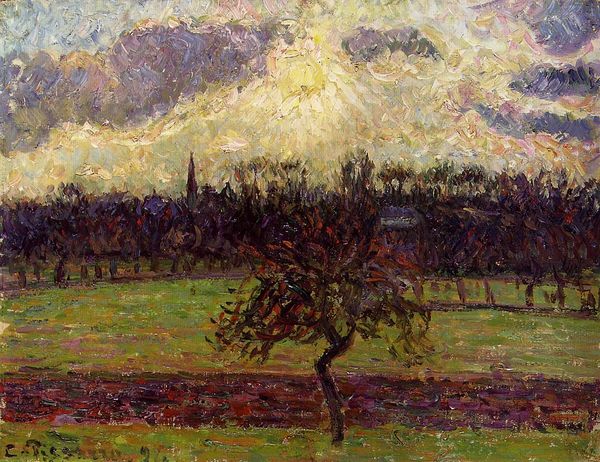
Dimensions: 54 x 65 cm
Copyright: Public domain
Editor: Pissarro’s "Flood, White Effect, Eragny" painted in 1893 with oil paint has such a stillness to it. I’m really struck by the contrast between the almost buzzing texture of the foreground field and the reflective, quiet water dominating the midground. What can you tell me about the symbolism Pissarro uses here? Curator: The power of water is key. Pissarro captures a moment of temporary inundation, almost rebirth of the landscape. Water, universally, can be a powerful signifier. Note how it’s not violent or destructive; instead, there’s a stillness, a sense of reflective potential. See the houses in the background? They’re small, dominated. Pissarro suggests the relative power of nature. Editor: So the flood isn’t necessarily a negative image? Curator: Not at all. In many cultures, floods, even after destruction, represent cleansing and fertility. It prepares the soil, lets things renew. The "white effect" also gives a symbolic dimension; whiteness embodies purity, promise. The stark branches mirroring in the water, skeletal against the sky, what do they whisper? Editor: Perhaps that even in the starkness, there is beauty, resilience... hope for spring. I love how Pissarro’s capture of this moment invites that sense of cyclical change. Curator: Precisely. He links nature’s cycle to humanity, both are at the mercy of elements and benefit from it in different ways. The way the sunlight interacts with the water – note those delicate brushstrokes – feels almost transcendent, doesn't it? Editor: Yes, and by capturing it *en plein air*, he invites the viewer to become immersed in this very experience. I never considered that the flood held a hopeful symbolism. I always thought of it from a viewpoint of chaos! Curator: That's the magic, isn't it? How a painting can challenge assumptions and reveal hidden layers of meaning.
Comments
No comments
Be the first to comment and join the conversation on the ultimate creative platform.
